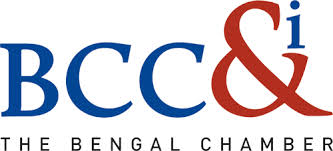 “The Budget is comprehensive but grey in respect of the expectations of specific announcements on reforms. Compact and directional in form on the whole, the Budget seems to have left us with some obscure areas in the backdrop of great expectations although it sets a direction for the economy in the years to come. The Chamber gives the Budget 5.5 out of 10:.
“The Budget is comprehensive but grey in respect of the expectations of specific announcements on reforms. Compact and directional in form on the whole, the Budget seems to have left us with some obscure areas in the backdrop of great expectations although it sets a direction for the economy in the years to come. The Chamber gives the Budget 5.5 out of 10:. – Sunil Mitra
Chairperson, Economic Affairs Committee, The Bengal Chamber & Former Revenue and Finance Secretary, Government of India
The Bengal Chamber congratulates the Finance Minister for trying to create a roadmap for the future by targeting a 7-8 percent growth in the economy in the next three years and an almost 20 percent increase in Plan Allocation in his maiden Budget. It is encouraging to note that an almost 4 percent growth has been fixed for the agriculture sector which is expected to generate fresh and high rates of employment. A proposed advancement of agriculture credit of around Rs. 8 lakh crore and a price stabilisation fund of Rs. 500 crore would further boost the sector that presently takes up almost 1/6th of the economy. A similar impetus has been provided through an investment allowance for the manufacturing sector. The relief provided in terms of raising the ceiling for personal income tax is somewhat trite although the Budget has tried to focus on raising savings as an essential factor of GDP to boost domestic and overseas investments.
However, reform-related policy measures have not been explicitly announced in the Budget although space has been created to boost the securities and capital markets by fixing reasonable rates on capital gains made by FIIs. Increase in FDI stake to 49 percent from 26 percent in Defence and Insurance sectors are welcome moves along with nominal financial sector reforms through FSLRC. Containing Fiscal Deficit within prohibitive limits and a very high non-plan expenditure of almost 70 percent continue to be major areas of concern as the issue of how to prune subsidy on food, fertilizer and petroleum sectors has been kept untouched in the Budget.
Raising funds through disinvestment has also not been mentioned. Only a nominal target has been fixed for the purpose. The modalities on the capital expenditure of Rs 2.47 lakh crore proposed for PSUs have remained somewhat obscure. It is good that the Budget has proposed a fresh infusion of Rs 40,000 crore into the equity of banks to tide over high rates of N.P.A.
The additional yield or resource mobilising target fixed in theBbudget seems quite low and might be unable to adjust to the high borrowing needs of the Government that has already been plagued with a high amount of foregone revenue. It, however, is noteworthy that the Government has set up an Expenditure Management Commission (EMC) to monitor spending. While GST is almost on track, there is no specific direction in the Budget on the Government’s intention to continue with GAAR or when exactly the Government would be able to implement DTC. Contrary to popular expectations, all cases arising out of retrospective tax law that have already been passed will be analysed by a high level authority.
Compact and directional in form on the whole, the Budget seems to have left us with some grey areas in the backdrop of great expectations although it sets a direction for the economy in the years to come. The Chamber gives the Budget 5.5 out of 10.
